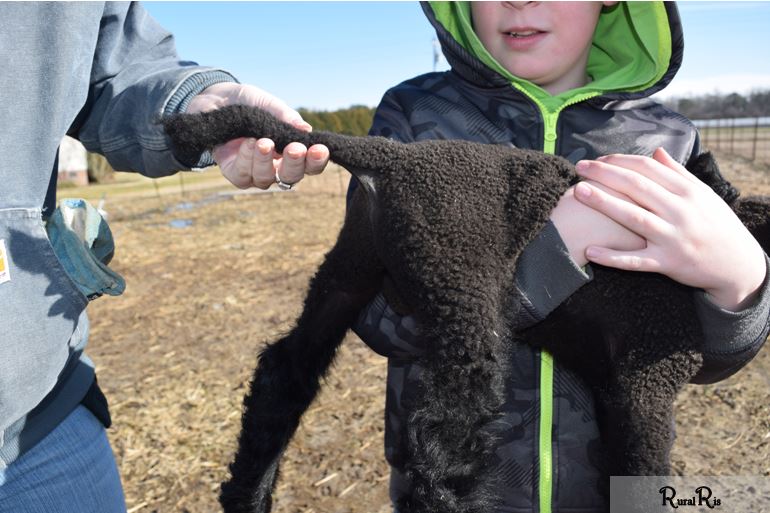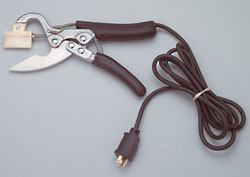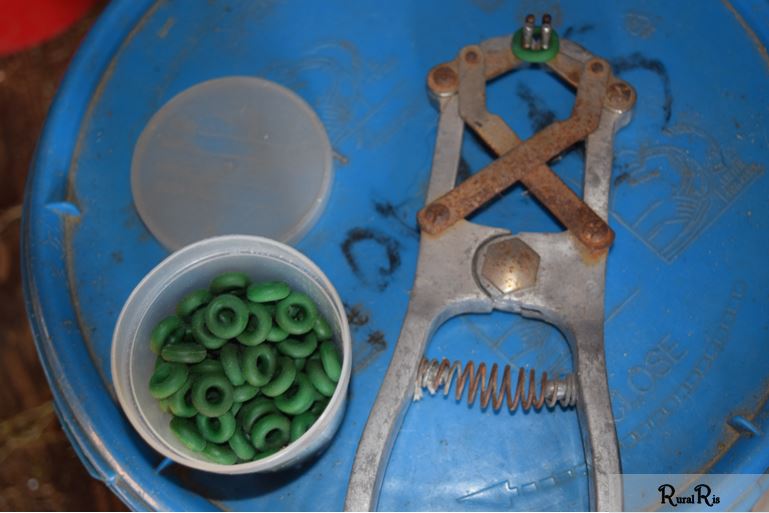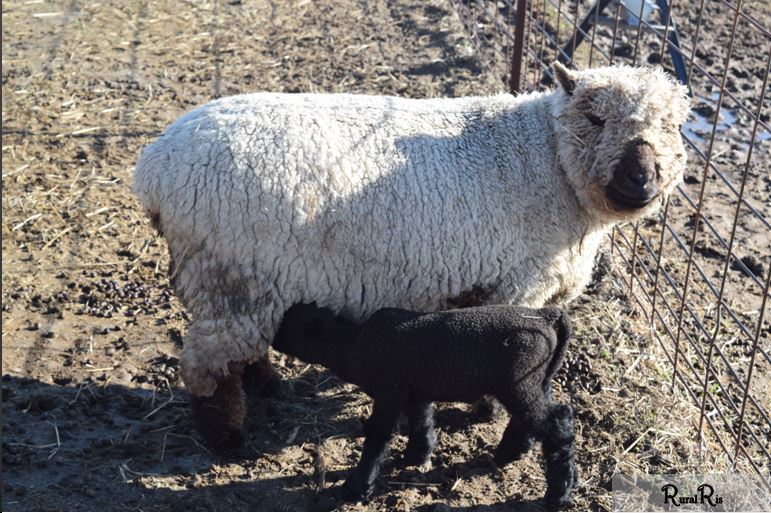Why do we dock lamb's tails?
If you have not met Grover, here is our little Southdown/Leicester cross lamb.

Isn't he just the cutest? I thought so too :)
Today Grover, like any lamb on our farm, got his tail docked. Docking a sheep's tail is not simply for aesthetic reasons, it has health reasons too. It isn't cruel, but rather, it is beneficial to the animal.
Why do we dock?
It isn't because the tail looks a little funny, although, I must say, it does look funny.
If the tail was not docked, the wool that grows on the tail would become caked with feces and urine. This isn't just gross when it comes to shearing time, but it also is unsanitary for the sheep and can cause irritation. In addition, docking also reduces the chances of fly strike, a painful condition caused by blowflies laying eggs in the fleece and the maggots burrow into the sheep's flesh. The sheep often dies within a few days of fly strike occurring. Some studies have also shown that docking tails increases growth rates. For these reasons, we dock the lambs' tails within the first week of life. Some sheep do not necessarily need to have their tails docked. Hair sheep, do not have the thick wool, and it does not pose as much of a problem.
How do we dock?
There are different ways to dock a lamb's tail. We use an elastrator (we also use this to castrate).
The elastrator tool puts a thick rubber ring or band on the tail, cutting off blood circulation. Around 10 days later the tail falls off. It is inhumane to use the elastrator on older lambs, which is why it should be done after 24 hours old but not after 1 week. Another tool to dock is an electric docker.
This tool cuts and cauterizes the tail simultaneously. It can be done in older lambs, but it is still best to do it on young lambs.
Are there negatives of docking?
Yes, if done incorrectly. It is important when docking lambs to not make the tail too short. If the tail is too short, it increases the chances of a rectal prolapse.
Does it hurt?
A little. The younger the lamb, the less stress it causes, though. When we put the band on Grover's tail, he did a little butt wiggle, and went straight back to mom. He acted like nothing was wrong. We have had some lambs be a little more sensitive, and act like there is something on their butt, which there is. They are always fine within the hour, though.
Is docking tails inhumane?
No, it is not. I have read where some people think that farmers have bred sheep to be unnatural in their wool production, and that is the only reason that we have to dock tails. While there are different breeds that have various kinds of wool, sheep naturally have wool. Farmers did not breed sheep to have an excess of wool. Those in the wild, do not have the same type of fiber as a domestic sheep, and do not even need to be sheared. For thousands of years, sheep have needed to been shorn for their fleece. It isn't a new phenomenon caused by selective breeding. Farmers breed for quality of wool and quantity, but regardless of the quantity, any amount of wool on the tail will cause unsanitary conditions. While docking may cause some discomfort, it is often no more uncomfortable than getting a vaccination shot.
Docking is beneficial to the lamb. It is not just for the farmer's sake, but also the animals. Grover did not seem to mind one bit about his procedure. He didn't cry or really squirm. I think he was more concerned that his mom was calling for him and we were touching his butt. He was just dandy.
Further Reading:
http://www.sheep101.info/201/dockcastrate.html
http://www.sheep101.info/tails.html
https://www.avma.org/KB/Resources/LiteratureReviews/Documents/lamb_tail_docking_bgnd.pdf



